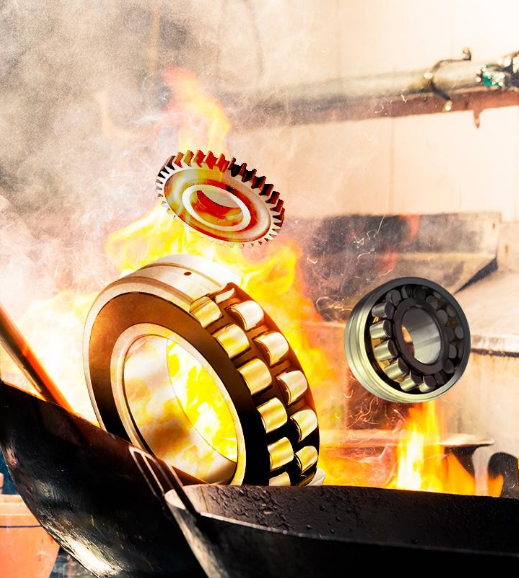Welcome to Sino Bearings web
24x7 HOTLINE:+86-28-81454188

 TECHNOLOGY
TECHNOLOGY
The way you mount your bearings and sprockets is essential to the performance of your equipment. When it comes to bearings alone, 17% of damage is due to poor mounting. As such, this process plays a critical role and deserves special care and attention.
A) Reminder
Hot mounting allows, by heating up a part of revolution, to expand the bearing's inner ring or a sprocket’s bore, so that it can effortlessly be fitted onto the shaft.
B) Avoid the pitfalls
Important: parts must never be heated with a blowtorch.
Heating a part too quickly and aggressively can alter the material's properties and thereby significantly reduce its service life. There may also be other consequences:
Bearings: expanding the inner ring faster than the outer ring creates significant stress on the rolling elements and may damage the actual elements or the raceway.Therefore, you are strongly advised to use appliances that keep the difference in temperature between the bearing's two rings under control.
Sensitive parts such as sprockets: considerable mechanical stresses may be exerted on the teeth. Uneven heating may deform the sprocket, with teeth subsequently breaking under stress.
Linear and even heating can help prevent this type of risk. An oven may be used, or a more convenient solution is an induction heating system.
In addition, the temperature must be high enough (maximum of 130°C for a bearing) to generate sufficient expansion and temporarily loosen the fit, so that the sprocket or bearing can easily be mounted.
The heating temperature depends on the ambient temperature and also the fit and material of the bearing seat.
To guarantee the integrity and easy mounting of the part that needs heating while ensuring operator safety, induction heating is the most recommended method.
C) Induction heating principle
The device is comprised of a laminated steel core surrounded by a coil with multiple windings. When a current passes through it, this primary coil generates a magnetic field which itself induces an electric current in the part to be heated (steel part), similar to the short-circuited secondary coil of an electrical transformer.
Induction heaters offer the following advantages:
Even and controlled heating of sensitive parts, such as sprockets and bearings used in sensitive applications
Temperature controlOne or two probes can be used to maximise the safety of the component to be heated and thereby prevent any alteration of its physical properties
A cost-effective and environmentally friendly heating method
Safety for operatorsOnly the part to be heated is subjected to an increase in temperature, which means easier handling and a lower risk of burns
Heating data can be extracted to maintain a record of the heating conditions
D) Other heating methods can be used
Oil bath: requires a recipient and perfectly clean oil. The uniformity of the heating temperature may be an issue, as well as pollution caused by the use of oil
A heating table: cannot be used for sealed bearings. In addition, you are advised to insert a wedge between the plate and the mechanical component to be heated
An oven
The technique of contracting the shaft by cooling with liquefied gas can also be used